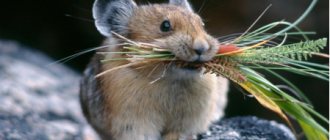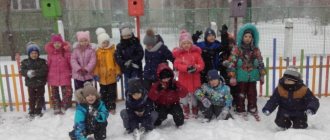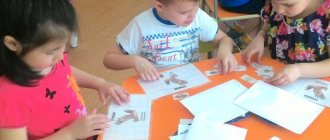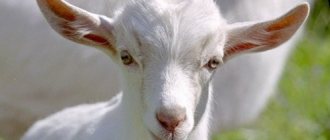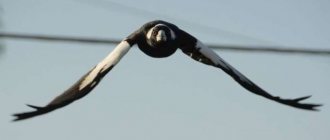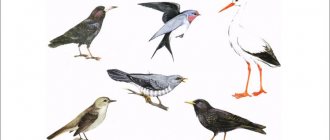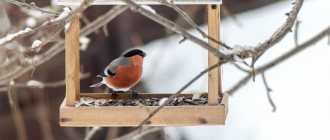Project “Wintering Birds”
Relevance.
In modern conditions, the problem of environmental education of preschool children becomes particularly acute and relevant. It is during preschool childhood that the beginnings of ecological culture are formed. Therefore, it is very important to awaken children’s interest in living nature, cultivate a love for it, and teach them to take care of the world around them.
Winter time is not only about cheerful holidays, lively slides and desperate snowball fights, but also severe frosts with a piercing wind. During the cold season, wintering birds face vital questions: how to feed themselves. The available food is becoming significantly less, but the need for it is increasing. Sometimes natural food becomes practically unavailable, so many birds cannot survive the winter and die.
Our task is to introduce children to the birds wintering in our area, their species and characteristics; teach how to take care of birds and help them in the cold winter.
Project type: informational and creative.
Type of project: group.
Duration: short term.
Age: 6 - 7 years.
Participants: teacher, children and parents of the preparatory group.
Project stages
Stage 1 – preparatory
- discussion of goals and objectives by educators, children, parents;
- creating the necessary conditions for the implementation of the project;
- long-term project planning.
Stage 2 – main (practical)
- introduction into the educational process of methods and techniques to expand children’s knowledge about wintering birds;
- productive activity of children.
Stage 3 – final
- project presentation,
- report on the “Help the Birds!” campaign.
Project implementation
Stage 1
Goal: expanding and enriching knowledge about wintering birds.
Tasks:
1. To consolidate children’s knowledge about wintering birds, about the role of humans in the life of wintering birds.
2. Contribute to the development of creative and intellectual abilities of students
3. Involve students and parents in helping birds in difficult winter conditions.
Expected Result:
1. Expanding children's horizons about wintering birds.
2. Improving the subject-development environment.
3. Active participation of children and parents in the exhibition “The Best Bird Feeder”
Stage 2
Basic (practical)
| Event | Tasks |
| Formation of a holistic picture of the world “Familiar Strangers”, reading B. Brecht “Winter Conversation through the Window” | Cultivate a caring attitude towards birds. To consolidate knowledge about the adaptation of birds to the winter period. Learn to establish cause-and-effect relationships between natural phenomena and the life of birds. |
| Observation of sparrows. Reading S. Yesenin “Winter Sings and Calls” | Clarify children's ideas about the habits of sparrows, note what time of year they fly to the feeder, what food they prefer, how long they stay at the feeder. Invite children to check the correctness of the folk superstition: “If a sparrow is ruffled, it means frost, feathers are smoothed, it means warmth.” Discuss with the children why the sparrow sits in cold weather, ruffled. |
| Conversation "Bird's dining room" | Talk with children about the importance of their work feeding birds; learn to feel involved in all living things. Foster respect for birds and responsibility; encourage the desire to be useful and help birds in winter. |
| Work activity:feeding birds. | Invite those who wish to take responsibility for cleaning and filling the feeder, teach them to select food taking into account what birds fly to the site. Offer to explain why it is especially important to feed birds after heavy snowfall and ice. Encourage the desire to care for birds. |
| Work in the “Magic Plasticine” circle: “Birds on the branches” | Expand children's understanding of wintering birds and the role of humans in the life of birds. Learn to convey your observations of living nature in artistic and visual activities, create pictures from thin plasticine flagella. Teach how to depict a bullfinch and a tit, convey the features of their appearance. Develop composition skills. |
| Construction: “Pigeons” (origami) | To instill in children a caring attitude towards birds. To consolidate children's knowledge about birds flying to the site. Make you want to make a dove using the origami technique. Strengthen children's ability to work with paper, folding a sheet in different directions. |
| Reading V. Bianchi “Bird Year: Winter”, M. N. Bogdanova “House Sparrow” | Introduce children to new literary works, continue to develop the ability to maintain a conversation based on the content of what they read, cultivate in children a love for the environment, and a desire to help birds. |
| Drawing “How we fed the birds” | To instill in children a caring attitude towards birds. To consolidate knowledge about the adaptation of birds to winter conditions. Develop independence in choosing visual media (colored pencils, paints, wax pencils). Develop compositional skills. |
| Board games: “Wintering Birds”, “Collect a Picture”, Lotto “Birds” | To consolidate the idea of wintering birds and their appearance. |
| Outdoor games: “Sparrows and a cat”, “Migration of birds”, “Birds in nests” | Develop an understanding of birds and their habits. Practice jumping on two legs. Develop coordination of movements and the ability to navigate on the site. |
| Didactic game “What is good and what is bad? | To instill in children a caring attitude towards birds, a desire to care for them and help them. |
Working with parents:
Release of leaflets, booklets: “Feed the birds in winter!”, “Help the birds”
Organization of the exhibition “The best bird feeder”.
Stage 3 - final
— Registration of project results in the form of a presentation,
— presentation of a report on the “Help the Birds!” campaign
Report on the event “Help the Birds!”
The action was attended by: children of the preparatory group, senior teacher Puzanova I.N., teacher Solovyova N.V., parents of students.
On the territory of the preschool educational institution, 14 feeders were hung, made by parents from various materials: wooden feeder houses, feeders made from boxes, from plastic bottles.
During the campaign, the following work was carried out:
- Daily feeding of birds;
- Observing their behavior;
- Using different feeds;
- Accounting for the number of birds and their species.
Tits were the first to begin mastering the feeders. At first they approached the feeders with caution and looked around for a long time, but gradually they got used to it and stopped being afraid of children. The sparrows flew in in a small flock. At the feeder they fight, scream, and argue over food. If tits flew to the feeder, the sparrows flew away, as if giving way to them. Bullfinches flew to the feeder. They behaved warily and flew away at the slightest approach of the children. Magpies and crows flew in alone and did not sit on the feeders. They collected food below, under the feeders. A flock of pigeons flew in. They collected food under feeding troughs, and sometimes approached the children at a distance of up to two meters. Waxwings flew to the site in the absence of children and did not sit on the feeders.
During the event the following people flew to the feeders:
- Tits – 30;
- Bullfinches – 4;
- Sparrows – 15;
- Crows – 11;
- Pigeons – 14;
- Waxwings – 13;
- Magpies - 7.
As a result of the work, the children learned:
- What types of birds remain to spend the winter in our area, and which ones fly to us for the winter;
- How to distinguish birds by color;
- What food do birds prefer?
The following conclusions were drawn:
- Birds become noticeable and more active as the weather warms up; the brighter the sun shines, the more birds there are on the street, the more active they are;
- Birds do not fly on windy days;
- As food, pigeons and sparrows prefer seeds, and tits prefer lard;
- Sparrows, pigeons, waxwings fly in flocks, tits in 3-4 groups, magpies, crows - alone;
- 7 species of birds visited the feeder;
- During the project, the birds have become accustomed to receiving food, so feeding must be continued.
Photo app
Project progress
Statement of the problem, entering into a game situation.
Educator: Children, today a bird, a rock dove, knocked on our window with its beak. I really love birds and study their language, so I understood what the dove said.
He asked to eat something, because in the cold winter it is very difficult to find food. I poured him a handful of seeds and the dove cooed happily. He told me that there were still a lot of birds outside that were very cold and hungry.
Are you ready to feed them? But we must remember that each bird prefers its own food.
Do you think we can figure out: how to distinguish one bird from another, where they live, what they eat, how and where to feed them?
Discussion of the problem of accepting a task.
Educator: What should you do to learn more about wintering birds?
Children: (answer options) Read books, look at: albums, postcards and magazines, draw wintering birds, make crafts, collect collections of pictures and drawings. Learn new things in classes, on hikes and excursions.
Joint search and research activities.
From 24.02.2022 to 28.04.2022.
Topic: “Wintering birds”
Quote on topic:
“This is how birds and people live, side by side, often not paying attention to each other, sometimes quarreling, sometimes rejoicing in each other, like members of one big family. Which one of them needs more - man for birds or birds for man? But will man survive if there are no birds left on Earth? E.N. Golovanov.
Motto: “We need to help feathered friends: feed, study, protect.”
Monday: The concept of “wintering birds”
“In hot countries it’s warmer, but in the Motherland, even in cold weather”
Classes
Speech development: Retelling the story of L.N. Tolstoy: “Smart Jackdaw.”
Educational activities in special moments
Didactic games:
- "Wintering and migratory birds."
- “Whose tail?” - body parts.
- “What will the bird say about itself?” - characteristic features of birds, unlike others.
Board games:
- “Circle the wintering birds.”
- “Collect a bird” - body parts of birds.
Fun game: “The birds have arrived” - separate the names of birds from other objects.
Articulation gymnastics: “Let’s warm the bird with our breath.”
Physical activity:
- Outdoor game: “Bird flocks”.
- Outdoor game: “Kite and hen.”
Patience and work will grind everything down: Making bird feeders from waste material.
Conversation: “How do our feathered friends live in winter?”
Let's dance together: "Dance of the Tits."
Fun chest: Proverbs and sayings about wintering birds.
Reading room: Reading stories from the collection “Sparrow in a Hat”, “Conversations of Animals and Birds”. Nikolai Sladkov.
Musical moment: Singing the song “Everybody Needs Friends” - about a sparrow.
Art gallery: Display of a series of paintings by John Sloan: “Birds and Flowers.”
Tili-bom - the album opens: Showing the album: “Wintering Next to Us.”
Paints, scissors, paper: Manual labor: “Jolly Birds” is waste material.
World of Coloring Books: Coloring the Wintering Birds coloring book.
Tuesday: Variety of wintering bird species
“A bird is recognized by its plumage and flight”
Classes
Fabric applique: “Who flew to the feeder?”
Mathematical development: “Funny bird counting”
Educational activities in special moments
Didactic games:
- "The fourth wheel."
- “Comparisons” - similarities and differences between birds.
- “Name a feature of wintering birds” - appearance and habits.
Board games:
- Lego "Different Birds".
- “Cut pictures of birds” - assemble a whole picture from parts.
Physical activity:
- "Birdcatcher".
- "Partridges and hunters."
Creative game: “Bird Dance School.”
Picture gallery: Display of a series of paintings by E. A. Tkacheva “Children and Birds”.
Round dance game: “Black Raven on an Oak Tree.”
Reading room: Reading a poem by Julian Tuwim: “Bird Radio.”
Physical education lesson: “Sparrow aerobics.”
Patience and work will grind everything down: Sorting and replenishing food supplies for wintering birds.
Musical minute: Individual work on singing “Chizhik - fawn.”
Tili-bom opens the album: Showing an album with figurines of wintering birds: “Porcelain Birds”.
Paints, scissors, paper: Origami crafts “Jackdaws and crows, are you all healthy?”
Dramatization game: Based on the scene “Woodpecker – Builder”.
Excursion to the winter park: Observation of wintering birds in their natural habitat.
Psycho-gymnastics: “Crows and sparrows” - imitate the movements of birds.
Conversation: “Why do birds stay with us for the winter?”
Wednesday. Classification of wintering birds by habitat
“Every bird is the mistress of its nest”
Classes
OBJ: “When are birds dangerous?”
Drawing: “Portraits of wintering birds.”
Educational activities in special moments
Didactic games:
- "Who lives where?".
- “Every bird in its place” - habitat.
- “There are some birds you don’t see at the feeder in winter.”
Board games:
- "Find the bird's shadow."
- "Bird Stories".
Physical activity:
- "Owl."
- "Sparrows and cars."
Game dramatization: Based on the poem: “Bird’s Dining Room.”
Sports attractions:
- “Hang the berries on the trees for the birds.”
- “Feed the crossbill chicks with cone seeds.”
Finger gymnastics: “Feeder”.
Patience and work will grind everything down: Adding bird food to feeders.
Moral conversation: “What can be done so that wintering birds do not regret remaining to spend the winter sleeping?”
Talkers: Compiling a story - reasoning “Come up with a name for the wintering bird, taking into account its external signs.”
Reading room: Reading stories about wintering birds from the collection “Russian Forest” by Ivan Sokolov-Mikitov.
Fun chest:
- Puppet theater: "Silly eagle chick."
- Riddles about wintering birds."
Musical minute: Listening to songs: “Crow - Karkarulya”, “You, titmouse, where have you been?”
Art gallery: Display of a series of paintings by Marjoline Bastin: “Portraits of Birds.”
Tili-bom opens the album: “How we feed the birds in winter.”
Paints, scissors, paper: Application: “Bullfinches and titmice.”
Fun with toys: “A set of soft toys in the shape of wintering birds.”
Thursday: Classification of wintering birds by feeding method
“There will be food in the feeder, and the birds will flock in”
Classes
Fiction: Reading the story by Maxim Gorky: “Sparrow.”
Local history: “Birds from the Red Book that live in our region.”
Educational activities in special moments
Didactic games:
- "Who eats what."
- “Find and feed wintering birds.”
- "Bird menu".
Board games:
- Domino "Birds".
- Puzzles "Birds".
The game is fun: “Who gives what voice?” - choose the role of a bird and imitate its voice.
Finger gymnastics: “Bullfinches”.
Physical activity:
- "Crossbills and Chicks."
- "Crows".
Patience and work will grind everything down: Cleaning and tidying up bird feeders.
Reading room: Vitaly Bianchi: “Sinichkin’s calendar.”
Moral conversation: “What will happen if you don’t care and don’t feed wintering birds?”
Fun chest:
- "Funny poems about wintering birds."
- Display of folk fabric toys “Birds”.
Musical minute: Singing a song - jokes: “Filka’s name day.”
Picture gallery: Display of paintings: T. N. Yablonskaya “Bullfinches”, I. V. Reshetnikov “Titmouse’s Thoughts”.
Tili-bom opens the album: Showing illustrations from the album “Air Conquerors”.
Artist competition: “Draw the most unusual winter bird.”
Friday: Winter feeding and bird protection
“Birds are our friends - we must not offend them!”
Classes
Natural World: Wintering Birds is a comprehensive activity.
Educational activities in special moments
Didactic games:
- “What benefits do birds bring?”
- “What did the artist mix up?”
- “Who needs whom” - logical chains of the ecosystem.
Board games:
- Labyrinth "Wintering Birds".
- "Bird Lotto"
Conversation: “What is worse for birds in winter: hunger or cold?”
Creative game: “Bird fashion show.”
Fun with toys: “The Wind-Up Bird.”
Let's dance together: "Dance of the White Doves."
Psycho-gymnastics: “Birds are scared of cats”
Physical activity:
- "Woodpecker".
- "Hawk Winter Hunting"
Patience and work will grind everything down: Repair and replacement of bird feeders.
Sayers: “Write a description of the bird you have in mind so that we can guess what it is called.”
Reading room: Reading a story about birds by Georgy Skrebitsky: “Hello, red sun”
Musical minute: Singing a song - game: “Two Grouse.”
Paints, scissors, paper:
- Design from natural material “Little bird - wren”.
- Creation of a homemade book “Wintering Birds”.
World of Coloring Books: Drawing and coloring wintering birds using stencils.
Picture gallery: Display of paintings by artists: Anikeeva, Balabushkina, Timma: “Capercaillie and black grouse.”
Round dance game: “In a dark forest, a thief is a sparrow.”
Crossword: Guessing the crossword puzzle “Wintering birds” using pictures.
Tili-bom opens the album: Showing a set of postcards “Birds of Prey”.
Interaction with parents: Report at a parent meeting on the topic: “Making feeders for wintering birds. Master Class".
Questionnaire: “What do you know about wintering birds?”
Consultations for parents:
- “Folk signs and bird calendar of wintering birds.”
- "Feed the birds in winter."
- “Children and pigeons. Safety in nature."
Photo exhibition:
- "Excursion to the winter park."
- "Bird Masquerade"
- Photo report from the Bird Festival.
- “Feeding birds in a feeder on the site.”
Exhibition of family crafts: “Feathered Friends.”
Exhibition of children's works:
- Origami: “Jackdaws and crows, are you all healthy?”
- Construction from waste material: “Funny Birds”.
- Drawing: “Portraits of wintering birds.”
- Manual labor: “What are the sparrows singing about?”
- Application: “Bullfinches and titmouses.”
- Fabric applique: “Who flew to the feeder?”
Preparation of costumes, decorations and attributes for the “Bird Festival”.
Exhibition:
- books;
- magazines;
- sets of postcards;
- albums;
- paintings about wintering birds in book and nature corners.
